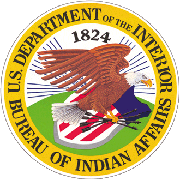Single Publication
Could not determine your location.
South Fork and Salt Fires Burned Area Emergency Response
Unit Information
Incident Contacts
- Karen Gleason, DOIEmail:karen_gleason@msn.com
- Cathleen Thompson, USFSEmail:cathleen.thompson@usda.gov
BAER Briefing Paper: Fire Severity & Fire Intensity Effects 06-28-2024
South Fork and Salt Fires Burned Area Emergency Response
Publication Type: Announcement - 06/28/2024 - 17:28
BAER BRIEFING PAPER: FIRE SEVERITY & FIRE INTENSITY EFFECTS
There are several types of fire severity and intensity maps that you may see. Although they look different for the same fire, they may also all be accurate. This is because fire severity or intensity are different measures of the fire effects on a specific resource such as soils, tree canopies, vegetation or wildlife habitat. Burned Area Emergency Response (BAER) maps are primarily measures of fire effects on soils. The following is a description of BAER fire severity mapping for soil burn severity levels.
SOIL BURN SEVERITY RATING OVERVIEW:
High Soil Burn Severity Rating: (severe damage to the soils): deeply burned soils with high water repellent soils (tend to be places where the fire burned the forest canopy, ground cover, roots, and organic matter in the topsoil).
Moderate Soil Burn Severity Rating: burned soil with moderate water repellent soils (much of the root, soil structure, and organic matter stayed intact and could help buffer the rainstorms that might cause erosion) can produce increased water run-off and soil erosion depending on the timing, magnitude, and duration of future precipitation. The remaining vegetation could quickly re-sprout and provide some cover from dead needles and leaf fall to reduce erosion.
Low Soil Burn Severity Rating: light soil burning includes land that may have burned in recent occurrences with brush or young timber growing on it.
KEY MESSAGES:
• Fire severity and intensity are separate measures of the effects of fire on a defined resource.
• All fire severity or intensity maps view landscapes from different perspectives, so various maps of the same fire can look very different, and all be accurate.
• The BAER soil burn severity maps specifically focus on severity to soils and watersheds.
• There are also several other types of fire severity or intensity maps – many of which focus on different aspects of vegetation such as, Burned Area Reflectance Classification (BARC) and Vegetation severity or intensity maps are both vegetation maps but will also look different for the same location and time.
• Vegetation severity and intensity maps also come from a number of different perspectives and can be short-term or long-term views.
• During post-fire assessments, the BAER team uses the term “soil burn severity” to differentiate post-fire soil properties from fire effects on vegetation (such as tree mortality), and/or general fire effects on the long-term ecosystem health.
• When a fire slowly consumes fuel (long residence time), the fire (soil burn) severity is usually high.
• Ground cover refers to the organic material on the top of the soil layer, and includes vegetative litter, duff, and woody debris.
• When organic material within the ground cover and within the soil structure burns at high intensity, some of the water repellent components vaporize, and condense on the soil at the surface or deeper depending on the severity of the fire.
• The correlation between fire intensity and soil burn severity is not always direct because the amount of heat generated and time duration both plays a critical role in the fire effects to soil.
• Because of the variability of fuel consumption, soil heating typically is non-uniform across landscapes.
• Wildfire does not always impact soils and vegetation in the same way.
• A hot, fast-moving fire can consume much of the vegetation and move through so quickly that the soils remain largely intact.
• Soil scientists evaluate preliminary burn maps from satellite imagery to determine the effects and create a soil burn severity map.
• Hydrologists use that information to model storm runoff over the burned area to estimate potential flood impacts to lives and property.
• Foresters use the same satellite images to create a different map that displays post-fire impacts to the trees.
• A hot, fast-moving fire (wind-driven) can consume the majority of vegetation (especially when dry with low fuel moistures) in a burned area and can be classified as a high intensity fire area by fire ecologists/fire behavior analysts.
• When the duration (also described as residency time) of the fire is short (fast moving, wind-driven), it can result in a low-to-moderate soil burn severity rating by BAER soils scientists because the soil did not get a lot of lingering heat on the ground.
BAER SAFETY MESSAGE: Everyone near and downstream from the burned areas should remain alert and stay updated on weather conditions that may result in heavy rains and increased water runoff. Flash flooding may occur quickly during heavy rain events--be prepared to act. Current weather and emergency notifications can be found at the National Weather Service website: www.weather.gov/abq/.

 InciWeb
InciWeb